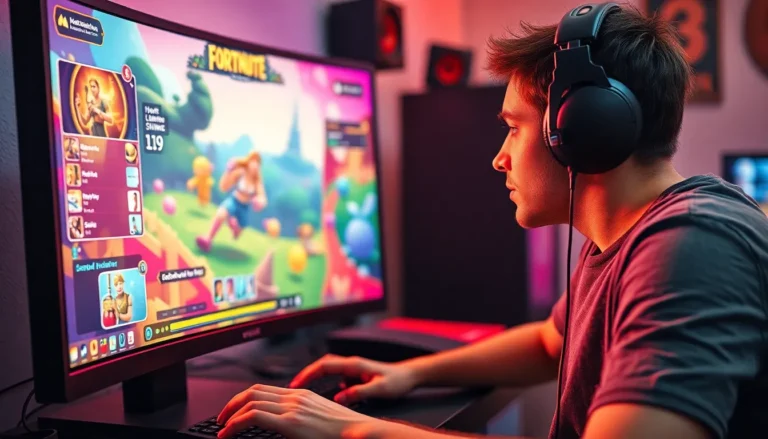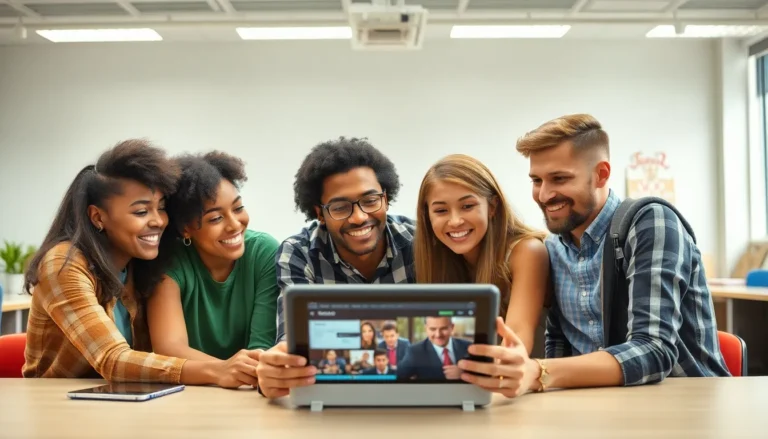In a world filled with endless information and learning opportunities, understanding one’s learning style can feel like finding a needle in a haystack. But fear not! This guide is here to transform that chaotic search into a smooth journey of discovery. Whether you’re a visual learner who thrives on colorful charts or an auditory learner who absorbs knowledge through podcasts, knowing your style can unlock the door to more effective studying and retention.
Imagine trying to bake a cake without knowing if you’re supposed to mix, fold, or whip. Learning is no different. By pinpointing how you learn best, you can save time, reduce frustration, and maybe even impress your friends with your newfound knowledge. So let’s dive in and uncover the secrets of learning styles—because who said education can’t be a little fun?
Table of Contents
ToggleOverview of Learning Styles
Learning styles refer to the different ways individuals absorb, process, and retain information. Recognizing these styles can greatly enhance educational experiences. The primary categories include visual, auditory, reading/writing, and kinesthetic learners. Each category captures distinct preferences that impact how a learner engages with material.
Visual learners benefit from diagrams, charts, and visual aids. They often remember information better when it is presented in a graphical format. For example, infographics can clarify complex concepts more than text alone.
Auditory learners, on the other hand, excel when they hear information. They prefer lectures, discussions, and audio materials. Listening to podcasts or joining study groups often benefits them during their learning process.
Reading/writing learners focus on written content. They engage deeply with texts, benefiting from notes, essays, and articles. Creating summaries or written reflections enhances their understanding of the subject.
Kinesthetic learners thrive on hands-on experiences. They learn best through physical activities, simulations, or experiments. For instance, conducting experiments in science labs or participating in role-playing scenarios greatly aids their retention of knowledge.
Understanding these learning styles assists in customizing study habits. Comparing personal preferences with these categories may unlock more effective learning techniques. Adjusting methods based on learning styles fosters deeper understanding and retention.
Importance of a Learning Style Guide
A learning style guide plays a crucial role in creating effective educational experiences. By understanding unique learning preferences, individuals can tailor their approaches to studying and information retention.
Personalizing Learning Experiences
Personalizing learning experiences helps students connect with material on a deeper level. Visual learners can thrive in environments filled with charts and images. Auditory learners benefit from group discussions and interactive lectures. Reading and writing learners find strength in detailed studies and engaging written content. Kinesthetic learners enjoy applying concepts through hands-on projects. Customizing methods according to these preferences encourages active participation and promotes a sense of ownership over the learning journey.
Enhancing Engagement and Retention
Engagement and retention improve significantly when educational content aligns with individual learning styles. Visual elements attract attention for visual learners, fostering increased interest. For auditory learners, clear and stimulating discussions enhance comprehension. Reading and writing learners excel with structured notes and essential texts. Kinesthetic learners absorb information effectively through practical applications. Understanding these distinctions allows educators to implement strategies that maintain learner interest, leading to improved memory and successful knowledge application.
Types of Learning Styles
Understanding different learning styles enhances educational approaches and fosters effective learning. The following are key types of learners.
Visual Learners
Visual learners absorb information best through images and visual aids. Charts, graphs, and diagrams capture their attention and help solidify concepts. They often prefer materials that include illustrations, color coding, and videos. In a classroom setting, visual learners engage more when lessons incorporate visual elements. Resources like flowcharts or infographics also support their learning process. By utilizing visually engaging materials, educators can significantly improve comprehension and retention for these learners.
Auditory Learners
Auditory learners prefer listening and verbal communication for their educational experience. They excel in groups where discussion and dialogue occur. Lectures and podcasts capture their interest, aiding in information retention. When studying, they may read aloud or engage with others to reinforce concepts. Hearing information presented verbally helps them process and recall significant details. Educators can enhance learning for auditory learners by incorporating discussions, music, and spoken word in lessons.
Kinesthetic Learners
Kinesthetic learners thrive through hands-on experience and physical engagement. They often benefit from experiments, simulations, and role-playing activities. Moving around and manipulating materials assists in understanding complex ideas. Engaging in practical tasks keeps them focused and motivated. When they can apply their learning in active ways, retention increases significantly. Creating opportunities for movement and practical application in lessons caters effectively to kinesthetic learners, enhancing their educational experience.
Developing a Learning Style Guide
Understanding how to develop a learning style guide enhances educational experiences. It prioritizes individual learning preferences, fostering effective information retention.
Assessing Individual Learning Styles
Assessing a learner’s unique style begins with various evaluation tools. Self-assessment quizzes help identify preferences among visual, auditory, reading/writing, and kinesthetic styles. Observations during classes or study sessions can provide insights into how students engage with material. Gathering feedback from learners about their experiences offers further clarity on their preferred learning methods. Individuals who reflect on past successes often recognize patterns that indicate their dominant styles. By utilizing multiple assessment strategies, educators can develop a comprehensive understanding of each student’s learning preferences.
Creating Tailored Learning Strategies
Creating tailored strategies ensures that lessons resonate with individual learners. Visual learners benefit from integrating diagrams, graphs, and infographics into the curriculum. Auditory learners thrive through discussions, podcasts, or audiobooks designed to reinforce concepts. Reading/writing learners excel with comprehensive texts, encouraging deep engagement with written content. Kinesthetic learners require opportunities for hands-on experiences, incorporating activities that promote active participation. By combining these tailored strategies, learning becomes a more personalized journey, enhancing overall comprehension and retention. Each approach aligns closely with the foundational principles of individual learning styles, ensuring that students connect meaningfully with the material.
Practical Applications of Learning Style Guide
Utilizing a learning style guide enhances educational experiences. It allows for the customization of teaching methods to align with individual preferences.
In Classroom Settings
Classroom environments benefit significantly from integrating learning style guides. Educators can tailor their approaches to accommodate visual learners by incorporating charts and diagrams. Auditory learners engage better during discussions and group activities. Kinesthetic learners thrive when hands-on tasks reinforce lessons. Each student’s needs shape a more productive atmosphere. By observing learners and adapting strategies, teachers foster greater comprehension. Retention improves when lessons resonate with student preferences.
In Online Learning Environments
Online learning platforms also effectively implement learning style guides. Visual learners can access video content and interactive presentations to enhance understanding. For auditory learners, podcasts and audio lectures offer valuable resources. Reading/writing learners excel with comprehensive articles and written assignments. Kinesthetic learners engage through simulations and practical projects. Personalizing online materials leads to increased motivation. Educators who adapt their online content optimize the learning experience for diverse learner types.
Understanding learning styles is essential for maximizing educational outcomes. By recognizing individual preferences, learners can engage with material in ways that resonate with them. This tailored approach not only enhances retention but also fosters a deeper connection to the content.
Educators who implement learning style guides create dynamic environments that cater to diverse needs. Whether in classrooms or online platforms, adapting teaching methods to align with various learning styles leads to improved motivation and comprehension. Embracing these strategies can transform the learning experience, making it more effective and enjoyable for everyone involved.








